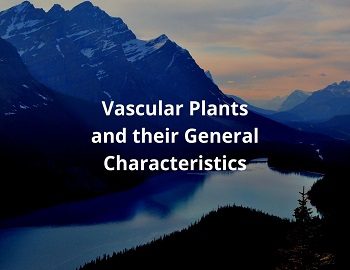Table of Contents
Vascular Plants:
Vascular Plants are those plants in which vascular tissue in the form of xylem and phloem is present. They form the top of the evolutionary tree of the plant kingdom. They are predominant land plants, some of which are as tall as 100 metres and as old as 6000 years. There are more than 275,000 species of living vascular plants, the majority of them being the flowering plants. Most fungi and land animals depend directly or indirectly for sustaining their life. The vascular plants are also the major source of economically useful vegetable products for man.
The vascular plants have been classified into three groups-
- Ferns- the vascular plants without seeds.
- Gymnosperms– the vascular plants with seeds, but without fruit.
- Angiosperms– the flowering plants with seeds enclosed in fruits.
General Characteristics of Vascular Plants:
- Their characteristic organs are roots, stem and leaves.
- These organs have well-developed xylem and phloem tissues.
- There is a distinct division of labour, between the different organs for photo-autotrophic life on land.
- The roots anchor the plant and absorb water and minerals from the soil.
- The leaves manufacture organic food by photosynthesis.
- The stem connects the root system with the shoot system and provides support.
- The gametophyte is delicate and small. In lower vascular plants, the gametophyte is independently living structure called prothallus. In higher vascular plants, it is parasitic over the sporophyte.
- Sex Organs- They are antheridia and archegonia in lower vascular plants. In higher ones, the sex organs are progressively simplified ultimately leading to gametophytes directly forming gametes.
- Embryo- Fertilization produces zygote which gives rise to an embryo.
Due to modifications in their various organs like roots, stem and leaves, vascular plants have been successful in adapting themselves to varied environmental conditions.
Reasons of Dominance of Vascular Plants:
- Development of deeply growing roots to absorb water from the soil.
- The photosynthetic area of vascular plants is generally large for rapid manufacture of sufficient food required for proper growth and storage.
- Development of a waxy layer made up of cutin to prevent water loss from the leaf surface.
- Development of woody tissues to provide support to the above-ground parts.
- Vascular plants possess both structural and physiological modifications that allow them to adapt to various ecological habitats.



![Water Cycle In Nature [Hydrological Cycle] 4 water cycle in environment](https://gkscientist.com/wp-content/uploads/2020/09/water-cycle-in-environment-350x200.jpg)





Comments (No)